As of 2012, tawny crazy ants have invaded 24 counties in Florida, parts of southeast Texas, and other areas of the southeastern U.S. The tawny crazy ant is considered a series pest. This species infests buildings and greenhouses, attacks crops, domestic animals, honeybee hives, displaces native ant species, and disrupts electrical equipment. This 3-page fact sheet covers the tawny crazy ant’s distribution, description, colonies, feeding habits, and pest status and control. Written by S. K. Hill, R. W. Baldwin, R. M. Pereira, and P. G. Koehler, and published by the UF Department of Entomology and Nematology, October 2013.
http://edis.ifas.ufl.edu/in1076
Tag: Rebecca W. Baldwin
Como hacer una trampa interceptora de chinches de cama de articulos comunes del hogar.
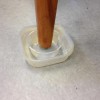 Las chinches de cama se han convertido en un problema de plagas cada vez más común en los Estados Unidos. Se han encontrado en muchos lugares diferentes en donde vive la gente, desde escuelas y restaurantes a consultorios médicos y salas de cine, pero las peores infestaciones son por lo general en lugares donde vive la gente, descansan y duermen como en casas, pisos, apartamentos, hoteles y refugios para desamparados. Las chinches de cama son más comunes en lugares como alrededor de piezas de mobiliario en donde la gente se sienta o acuesta- camas, sillas y sofás. Para descubrir si las chiches están presentes en una habitación o un mueble, el dispositivo llamado trampa interceptora de chinches puede ser útil. Las trampas interceptoras atrapan y recogen las chinches de cama cuando tratan de viajar entre sus huéspedes humanos y sus escondites. Las trampas interceptoras de chinches de cama son fácilmente hechas de artículos del hogar y recipientes de plástico desechables. This 4-page fact sheet was written by Benjamin A. Hottel, Rebecca W. Baldwin, Roberto M. Pereira, and Philip G. Koehler, and published by the UF Department of Entomology and Nematology, February 2014.
Las chinches de cama se han convertido en un problema de plagas cada vez más común en los Estados Unidos. Se han encontrado en muchos lugares diferentes en donde vive la gente, desde escuelas y restaurantes a consultorios médicos y salas de cine, pero las peores infestaciones son por lo general en lugares donde vive la gente, descansan y duermen como en casas, pisos, apartamentos, hoteles y refugios para desamparados. Las chinches de cama son más comunes en lugares como alrededor de piezas de mobiliario en donde la gente se sienta o acuesta- camas, sillas y sofás. Para descubrir si las chiches están presentes en una habitación o un mueble, el dispositivo llamado trampa interceptora de chinches puede ser útil. Las trampas interceptoras atrapan y recogen las chinches de cama cuando tratan de viajar entre sus huéspedes humanos y sus escondites. Las trampas interceptoras de chinches de cama son fácilmente hechas de artículos del hogar y recipientes de plástico desechables. This 4-page fact sheet was written by Benjamin A. Hottel, Rebecca W. Baldwin, Roberto M. Pereira, and Philip G. Koehler, and published by the UF Department of Entomology and Nematology, February 2014.
http://edis.ifas.ufl.edu/in1026
How to Make a Bed Bug Interceptor Trap out of Common Household Items
 Bed bugs have become an increasingly common pest problem throughout the United States. To discover whether bed bugs are present in a room or a piece of furniture, you can make interceptor traps out of commonly found household items and disposable plastic containers. This 5-page fact sheet was written by Benjamin A. Hottel, Rebecca W. Baldwin, Roberto M. Pereira, and Philip G. Koehler, and published by the UF Department of Entomology and Nematology, January 2014.
Bed bugs have become an increasingly common pest problem throughout the United States. To discover whether bed bugs are present in a room or a piece of furniture, you can make interceptor traps out of commonly found household items and disposable plastic containers. This 5-page fact sheet was written by Benjamin A. Hottel, Rebecca W. Baldwin, Roberto M. Pereira, and Philip G. Koehler, and published by the UF Department of Entomology and Nematology, January 2014.
http://edis.ifas.ufl.edu/in1022
Pesticide Safety Miniposter: Pest Control Vehicle Safety (ENY2013/IN963)
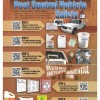 Do you need to train your employees about vehicle safety while transporting pesticides? This poster introduces safety concepts when transporting pesticides on a vehicle and alerts new pest control technicians to the pest control vehicle regulations of the Florida Department of Agriculture. The poster has quick response (QR) codes linked to short, online videos that take the technicians though six steps of maintaining a safe and legal service vehicle. This poster will serve as a valuable training and refresher tool. Designed by R.W. Baldwin, S.K. Hill, Philip Koehler, P.A. Mitola, and J.C. Medley, and published by the UF Department of Entomology and Nematology, August 2012.
Do you need to train your employees about vehicle safety while transporting pesticides? This poster introduces safety concepts when transporting pesticides on a vehicle and alerts new pest control technicians to the pest control vehicle regulations of the Florida Department of Agriculture. The poster has quick response (QR) codes linked to short, online videos that take the technicians though six steps of maintaining a safe and legal service vehicle. This poster will serve as a valuable training and refresher tool. Designed by R.W. Baldwin, S.K. Hill, Philip Koehler, P.A. Mitola, and J.C. Medley, and published by the UF Department of Entomology and Nematology, August 2012.
http://edis.ifas.ufl.edu/in963
Pesticide Safety Miniposter: Pesticide Spill Control (ENY2011/IN961)
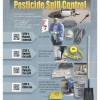 This poster acquaints new pest control technicians with proper procedures to manage an unscheduled pesticide release. The poster has quick response (QR) codes that direct a smartphone to online videos highlighting the steps of cleaning up a pesticide spill site, beginning with controlling the spill and ending with decontamination of the site. This poster will serve as a valuable training tool for new technicians and a refresher tool for pesticide applicators. Designed by R.W. Baldwin, S.K. Hill, Philip Koehler, P.A. Mitola, and J.C. Medley, and published by the UF Department of Entomology and Nematology, August 2012.
This poster acquaints new pest control technicians with proper procedures to manage an unscheduled pesticide release. The poster has quick response (QR) codes that direct a smartphone to online videos highlighting the steps of cleaning up a pesticide spill site, beginning with controlling the spill and ending with decontamination of the site. This poster will serve as a valuable training tool for new technicians and a refresher tool for pesticide applicators. Designed by R.W. Baldwin, S.K. Hill, Philip Koehler, P.A. Mitola, and J.C. Medley, and published by the UF Department of Entomology and Nematology, August 2012.
http://edis.ifas.ufl.edu/in961
Pesticide Safety Miniposter: Triple Rinse Steps (ENY2012/IN962)
 The Triple Rinse poster acquaints new pest management technicians to proper techniques to clean and dispose of empty pesticide containers. The poster uses quick response (QR) codes that direct smartphones to online videos that demonstrate the triple rinse process and container disposal. This poster will serve as a valuable training tool for new technicians and a refresher tool for pesticide applicators. Designed by R.W. Baldwin, S.K. Hill, Philip Koehler, W. Walker, and J.C. Medley, and published by the UF Department of Entomology and Nematology, 8. http://edis.ifas.ufl.edu/in962
The Triple Rinse poster acquaints new pest management technicians to proper techniques to clean and dispose of empty pesticide containers. The poster uses quick response (QR) codes that direct smartphones to online videos that demonstrate the triple rinse process and container disposal. This poster will serve as a valuable training tool for new technicians and a refresher tool for pesticide applicators. Designed by R.W. Baldwin, S.K. Hill, Philip Koehler, W. Walker, and J.C. Medley, and published by the UF Department of Entomology and Nematology, 8. http://edis.ifas.ufl.edu/in962
Pesticide Safety Miniposter: Pesticide Formulations (ENY915/IN955)
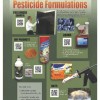 Do you need a quick training reference to common pesticide formulations? This poster introduces new pest control technicians to pesticide product formulations. The poster has quick response (QR) codes that link to videos showing example formulations of liquid pesticides, baits, pressurized aerosols, and a variety of dry product pesticides. Technicians need to be familiar with the products and formulations they are using, so this poster and its videos will be a useful training tool for pest management companies. Designed by R.W. Baldwin, S.K. Hill, Philip Koehler, P.A. Mitola, and J.C. Medley, and published by the UF Department of Entomology and Nematology, August 2012.
Do you need a quick training reference to common pesticide formulations? This poster introduces new pest control technicians to pesticide product formulations. The poster has quick response (QR) codes that link to videos showing example formulations of liquid pesticides, baits, pressurized aerosols, and a variety of dry product pesticides. Technicians need to be familiar with the products and formulations they are using, so this poster and its videos will be a useful training tool for pest management companies. Designed by R.W. Baldwin, S.K. Hill, Philip Koehler, P.A. Mitola, and J.C. Medley, and published by the UF Department of Entomology and Nematology, August 2012.
http://edis.ifas.ufl.edu/in955
Pesticide Safety Miniposter: Daily Personal Care (ENY917/IN956)
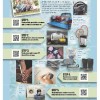 Anyone applying pesticides should be aware of the importance of preventing pesticide exposure to themselves, their families, and their pets by following a few personal care procedures each day. The information and video links (QR codes) on the Daily Personal Care poster provide technicians with examples of areas that are commonly contaminated by pesticides. The poster explains methods for the decontamination of vehicles, application equipment, personal items like cell phones, and clothing. Designed by R.W. Baldwin, S.K. Hill, Philip Koehler, W. Walker, and J.C. Medley, and published by the UF Department of Entomology and Nematology, August 2012.
Anyone applying pesticides should be aware of the importance of preventing pesticide exposure to themselves, their families, and their pets by following a few personal care procedures each day. The information and video links (QR codes) on the Daily Personal Care poster provide technicians with examples of areas that are commonly contaminated by pesticides. The poster explains methods for the decontamination of vehicles, application equipment, personal items like cell phones, and clothing. Designed by R.W. Baldwin, S.K. Hill, Philip Koehler, W. Walker, and J.C. Medley, and published by the UF Department of Entomology and Nematology, August 2012.
http://edis.ifas.ufl.edu/in956
Pesticide Safety Miniposter: Labels and Material Safety Data Sheets (MSDSs) (ENY918/IN958)
 You have heard the phrase, “the label is the law.” Pest control technicians need to learn the components of a pesticide label and the information they can find on the Material Safety Data Sheet (MSDS). This poster acquaints new pest control technicians with the information they will find on pesticide labels and on MSDSs. The poster has quick response (QR) codes that direct smartphones to short, online videos explaining how to read pesticide labels and MSDSs. Designed by R.W. Baldwin, S.K. Hill, Philip Koehler, P.A. Mitola, and J.C. Medley, and published by the UF Department of Entomology and Nematology, August 2012.
You have heard the phrase, “the label is the law.” Pest control technicians need to learn the components of a pesticide label and the information they can find on the Material Safety Data Sheet (MSDS). This poster acquaints new pest control technicians with the information they will find on pesticide labels and on MSDSs. The poster has quick response (QR) codes that direct smartphones to short, online videos explaining how to read pesticide labels and MSDSs. Designed by R.W. Baldwin, S.K. Hill, Philip Koehler, P.A. Mitola, and J.C. Medley, and published by the UF Department of Entomology and Nematology, August 2012.
http://edis.ifas.ufl.edu/in958
Pesticide Safety Miniposter: Apply the Correct Amount (ENY919/IN959)
 Pest managers must know the proper amount of pesticide product to apply. This poster acquaints new pest control technicians with the basic process of following label instructions to properly dilute pesticides, and it walks technicians through two types of basic equipment calibration. The poster has quick response (QR) codes that link smartphones to online videos illustrating each step in applying the correct amount of pesticides. Designed by R.W. Baldwin, S.K. Hill, Philip Koehler, W. Walker, and J.C. Medley, and published by the UF Department of Entomology and Nematology, August 2012.
Pest managers must know the proper amount of pesticide product to apply. This poster acquaints new pest control technicians with the basic process of following label instructions to properly dilute pesticides, and it walks technicians through two types of basic equipment calibration. The poster has quick response (QR) codes that link smartphones to online videos illustrating each step in applying the correct amount of pesticides. Designed by R.W. Baldwin, S.K. Hill, Philip Koehler, W. Walker, and J.C. Medley, and published by the UF Department of Entomology and Nematology, August 2012.
http://edis.ifas.ufl.edu/in959
Pesticide Safety Miniposter: Protecting Yourself (ENY2010/IN960)
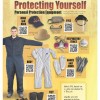 To properly apply pesticides, a technician must be aware of the personal protective equipment, or PPE, required for the application. This poster introduces new pest control technicians to different types of PPE they may be required to wear during a pesticide application or pest management inspection. There is a wide array of examples of PPE on the poster, with quick response (QR) codes that direct smartphones to short, online videos explaining PPE for each area of the body (head, eyes, face, mouth, hands and arms, torso and feet). This poster will serve as a valuable training tool for new technicians and a refresher tool for pest managers. Designed by R.W. Baldwin, S.K. Hill, Philip Koehler, W. Walker, and J.C. Medley, and published by the UF Department of Entomology and Nematology, August 2012.
To properly apply pesticides, a technician must be aware of the personal protective equipment, or PPE, required for the application. This poster introduces new pest control technicians to different types of PPE they may be required to wear during a pesticide application or pest management inspection. There is a wide array of examples of PPE on the poster, with quick response (QR) codes that direct smartphones to short, online videos explaining PPE for each area of the body (head, eyes, face, mouth, hands and arms, torso and feet). This poster will serve as a valuable training tool for new technicians and a refresher tool for pest managers. Designed by R.W. Baldwin, S.K. Hill, Philip Koehler, W. Walker, and J.C. Medley, and published by the UF Department of Entomology and Nematology, August 2012.
http://edis.ifas.ufl.edu/in960
Pesticide Safety Miniposter: Pesticide Emergencies (ENY916/IN954)
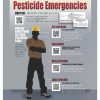 This poster introduces new pest control technicians to the general actions to be taken in the event of pesticide exposure. Technicians learn to recognize symptoms of exposure as they watch videos linked to the quick response (QR) codes on the poster. The videos detail general first aid steps to undertake until medical help arrives after a pesticide exposure. Designed by R.W. Baldwin, S.K. Hill, Philip Koehler, W. Walker, and J.C. Medley, and published by the UF Department of Entomology and Nematology, August 2012.
This poster introduces new pest control technicians to the general actions to be taken in the event of pesticide exposure. Technicians learn to recognize symptoms of exposure as they watch videos linked to the quick response (QR) codes on the poster. The videos detail general first aid steps to undertake until medical help arrives after a pesticide exposure. Designed by R.W. Baldwin, S.K. Hill, Philip Koehler, W. Walker, and J.C. Medley, and published by the UF Department of Entomology and Nematology, August 2012.
http://edis.ifas.ufl.edu/in954
¿Qué te está picando? (ENY2015S/IN927)
 Pulgas, piojos, chinches, o garrapatas? Ponle atención a tu insecto para que sepas lo que es. This poster was written by E. E. Harlow, C. A. McNeill, R. W. Baldwin, R. M. Pereira, P. G. Koehler, and J. C. Medley, and published by the UF Department of Entomology and Nematology, April 2012.
Pulgas, piojos, chinches, o garrapatas? Ponle atención a tu insecto para que sepas lo que es. This poster was written by E. E. Harlow, C. A. McNeill, R. W. Baldwin, R. M. Pereira, P. G. Koehler, and J. C. Medley, and published by the UF Department of Entomology and Nematology, April 2012.
http://edis.ifas.ufl.edu/in927
What Is Biting You? (ENY2015/IN926)
 Why are you itchy? Identify the problem pest with this handy poster written by E. E. Harlow, C. A. McNeill, R. W. Baldwin, R. M. Pereira, P. G. Koehler, and J. C. Medley, and published by the UF Department of Entomology and Nematology, April 2012.
Why are you itchy? Identify the problem pest with this handy poster written by E. E. Harlow, C. A. McNeill, R. W. Baldwin, R. M. Pereira, P. G. Koehler, and J. C. Medley, and published by the UF Department of Entomology and Nematology, April 2012.
http://edis.ifas.ufl.edu/in926
IPM:Beyond Spraying (ENY2016/IN928)
 Integrated Pest Management, or IPM, is more than just spraying. Follow the five IPM steps to outsmart pests. This poster was written by R.W. Baldwin, S.K. Larrick, Philip Koehler, P.A. Mitola, and J.C. Medley, and published by the UF Department of Entomology and Nematology, September 2011.
Integrated Pest Management, or IPM, is more than just spraying. Follow the five IPM steps to outsmart pests. This poster was written by R.W. Baldwin, S.K. Larrick, Philip Koehler, P.A. Mitola, and J.C. Medley, and published by the UF Department of Entomology and Nematology, September 2011.
http://edis.ifas.ufl.edu/in928
Florida Woods Cockroach Eurycotis floridana (Walker) (EENY514/IN915)
 This “peridomestic” organism can be found in structures near the home, such as storage areas, greenhouses, or shelter boxes for other structures such as water pumps. It is one of the species commonly referred to as palmetto bugs, and is also called a “stinkroach” or “skunk cockroach” due to its aromatic defensive secretions. This 6-page fact sheet was written by Christopher S. Bibbs and Rebecca W. Baldwin, and published by the UF Department of Entomology and Nematology, December 2011.
This “peridomestic” organism can be found in structures near the home, such as storage areas, greenhouses, or shelter boxes for other structures such as water pumps. It is one of the species commonly referred to as palmetto bugs, and is also called a “stinkroach” or “skunk cockroach” due to its aromatic defensive secretions. This 6-page fact sheet was written by Christopher S. Bibbs and Rebecca W. Baldwin, and published by the UF Department of Entomology and Nematology, December 2011.
http://edis.ifas.ufl.edu/in915
Horned passalus, Odontotaenius disjunctus (Illiger) (Insecta: Coleoptera: Passalidae: Passalinae) (EENY487/IN879)
This 6-page illustrated fact sheet describes the commonly encountered and easily recognizable beetle, also known as the “betsy beetle,” that is a beneficial decomposer of decaying wood or logs. Includes synonymy, distribution, description, life cycle and biology, feeding habitat, sounds, and selected references. Written by Christopher S. Bibbs, Amanda C. Hodges, and Rebecca W. Baldwin, Published by the UF Department of Entomology and Nematology as part of the Featured Creatures collection, December 2010.
http://edis.ifas.ufl.edu/in879
